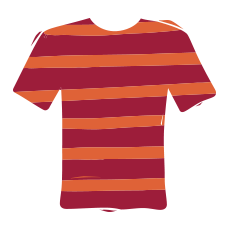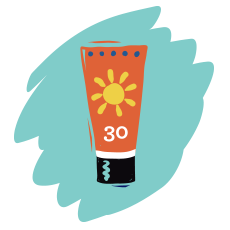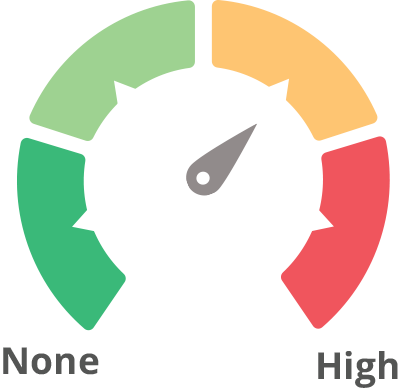

Please note that EWG obtains the displayed images of products from third parties and that the product's manufacturer or packager may change the product's packaging at any point in time. Therefore, EWG assumes no responsibility for the accuracy of images presented.
Close
EWG assumes no responsibility for the accuracy of images presented.
Sunscreens can break down while still in the bottle. To be safe dispose of products when the mixture clumps or separates.
This product contains chemical active ingredient(s) that the FDA does not have enough health safety data to classify as safe and effective: OCTINOXATE







Ingredients from label Active Ingredients: ETHYLHEXYL METHOXYCINNAMATE 5.99%, ZINC OXIDE (NANO) 2.92%; Inactive Ingredients: AQUA/WATER/EAU, GLYCERIN, ISOPROPYL PALMITATE, ISOHEXADECANE, STEARETH-21, BEHENYL ALCOHOL, CETYL ALCOHOL, STEARYL ALCOHOL, PHENOXYETHANOL, DIMETHICONE, POLYACRYLAMIDE, TOCOPHERYL ACETATE, TALC, C13-14 ISOPARAFFIN, CHLORPHENESIN, STEARETH-2, LAURETH-7, DISODIUM EDTA, DIMETHICONOL, TRIETHOXYCAPRYLYLSILANE, OLETH-3 PHOSPHATE, PANTHENOL, METHICONE, ALUMINA, BHT, [MAY CONTAIN/+/-:TITANIUM DIOXIDE (CI 77891), IRON OXIDES (CI 77491, CI 77492, CI 77499)].
Concerns: Developmental/reproductive toxicity (moderate), Allergies/immunotoxicity (moderate), Enhanced skin absorption, Neurotoxicity (low), Endocrine disruption (moderate), Persistence and bioaccumulation (low), Non-reproductive organ system toxicity (low), Biochemical or cellular level changes (high)
Concerns: Use restrictions (high), Persistence and bioaccumulation (moderate), Non-reproductive organ system toxicity (moderate), Ecotoxicology (low), Contamination concerns (ACRYLAMIDE)
Concerns: Cancer (high), Use restrictions (high), Non-reproductive organ system toxicity (moderate), Contamination concerns (ASBESTIFORM FIBERS)
Concerns: Cancer (moderate), Developmental/reproductive toxicity (low), Allergies/immunotoxicity (high), Endocrine disruption (low), Non-reproductive organ system toxicity (moderate), Irritation (skin, eyes, or lungs) (moderate)
Concerns: Allergies/immunotoxicity (low), Use restrictions (moderate), Non-reproductive organ system toxicity (moderate), Irritation (skin, eyes, or lungs) (high), Occupational hazards (high)
Concerns: Use restrictions (moderate), Persistence and bioaccumulation (high), Non-reproductive organ system toxicity (moderate), Ecotoxicology (low)
Concerns: Allergies/immunotoxicity (moderate), Use restrictions (moderate), Persistence and bioaccumulation (moderate), Non-reproductive organ system toxicity (low), Irritation (skin, eyes, or lungs) (moderate)
Concerns: Use restrictions (low), Non-reproductive organ system toxicity (low), Irritation (skin, eyes, or lungs) (low), Contamination concerns (ETHYLENE OXIDE and 1,4-DIOXANE)
Concerns: Cancer (low), Allergies/immunotoxicity (moderate), Contamination concerns (HYDROQUINONE)
Concerns: Use restrictions (low), Non-reproductive organ system toxicity (low), Irritation (skin, eyes, or lungs) (low), Contamination concerns (ETHYLENE OXIDE and 1,4-DIOXANE)
Concerns: Use restrictions (low), Irritation (skin, eyes, or lungs) (low), Contamination concerns (ETHYLENE OXIDE and 1,4-DIOXANE)
Concerns: Cancer (low), Allergies/immunotoxicity (high), Enhanced skin absorption, Persistence and bioaccumulation (moderate), Non-reproductive organ system toxicity (moderate)
Concerns: Enhanced skin absorption, Persistence and bioaccumulation (high), Non-reproductive organ system toxicity (low)
Concerns: Cancer (low), Allergies/immunotoxicity (moderate), Enhanced skin absorption, Use restrictions (moderate), Persistence and bioaccumulation (low), Non-reproductive organ system toxicity (low), Ecotoxicology (low), Occupational hazards (moderate), Biochemical or cellular level changes (high)
Concerns: Use restrictions (moderate)
Concerns: Contamination concerns (ETHYLENE OXIDE and 1,4-DIOXANE)
Concerns: Use restrictions (low), Non-reproductive organ system toxicity (moderate), Ecotoxicology (low)
Concerns: Allergies/immunotoxicity (low), Non-reproductive organ system toxicity (low), Irritation (skin, eyes, or lungs) (low)
Concerns: Non-reproductive organ system toxicity (moderate)
Concerns: Irritation (skin, eyes, or lungs) (moderate)
Concerns: Use restrictions (low), Non-reproductive organ system toxicity (low)
Concerns: Enhanced skin absorption
Concerns: Multiple, additive exposure sources (low)
Concerns: Cancer (moderate), Non-reproductive organ system toxicity (moderate), Occupational hazards (high)






UVA/UVB Balance

EWG's estimate of the UV protection provided by this product. An ideal sunscreen filters UVA and UVB rays evenly, but some sunscreens let too many UVA rays through.
Close